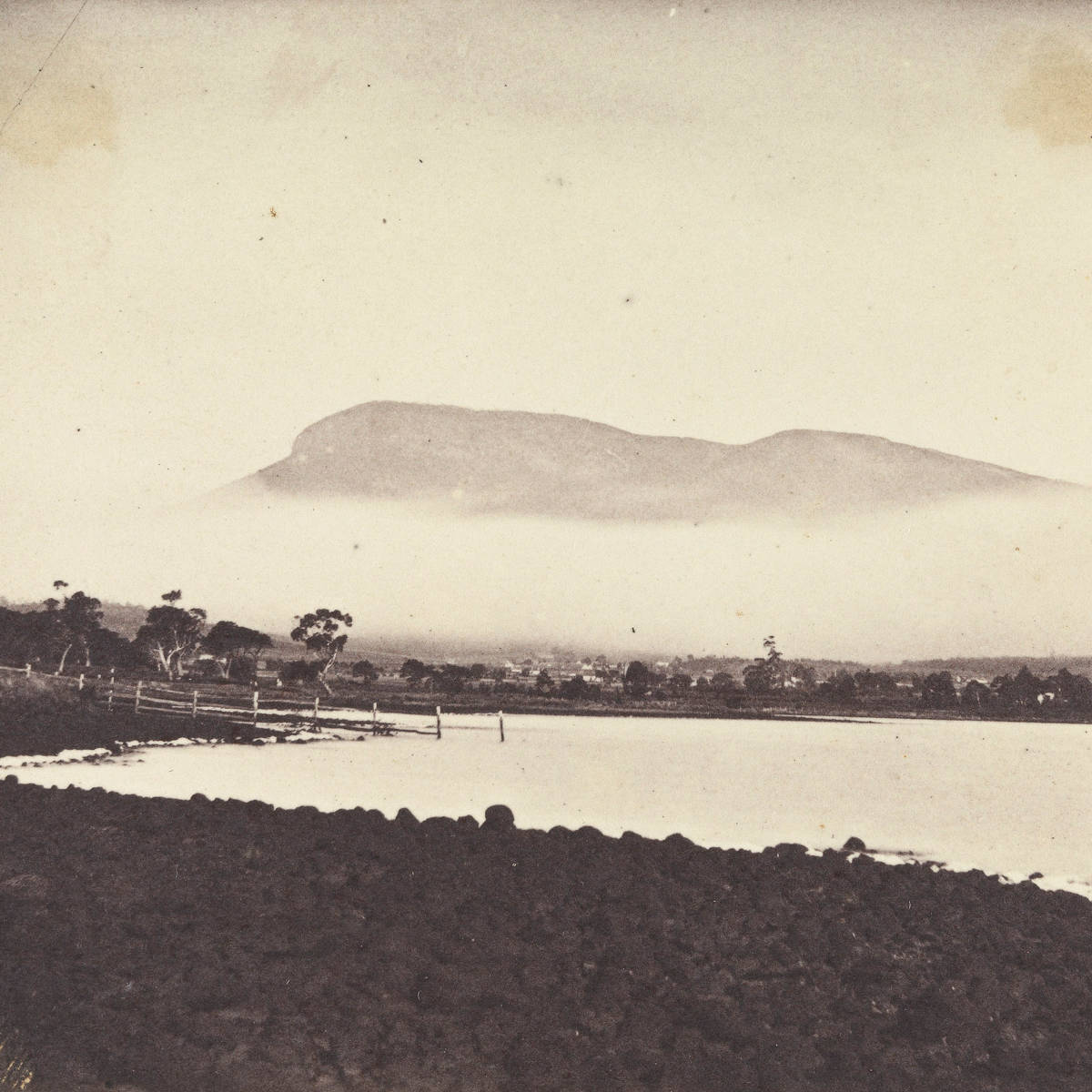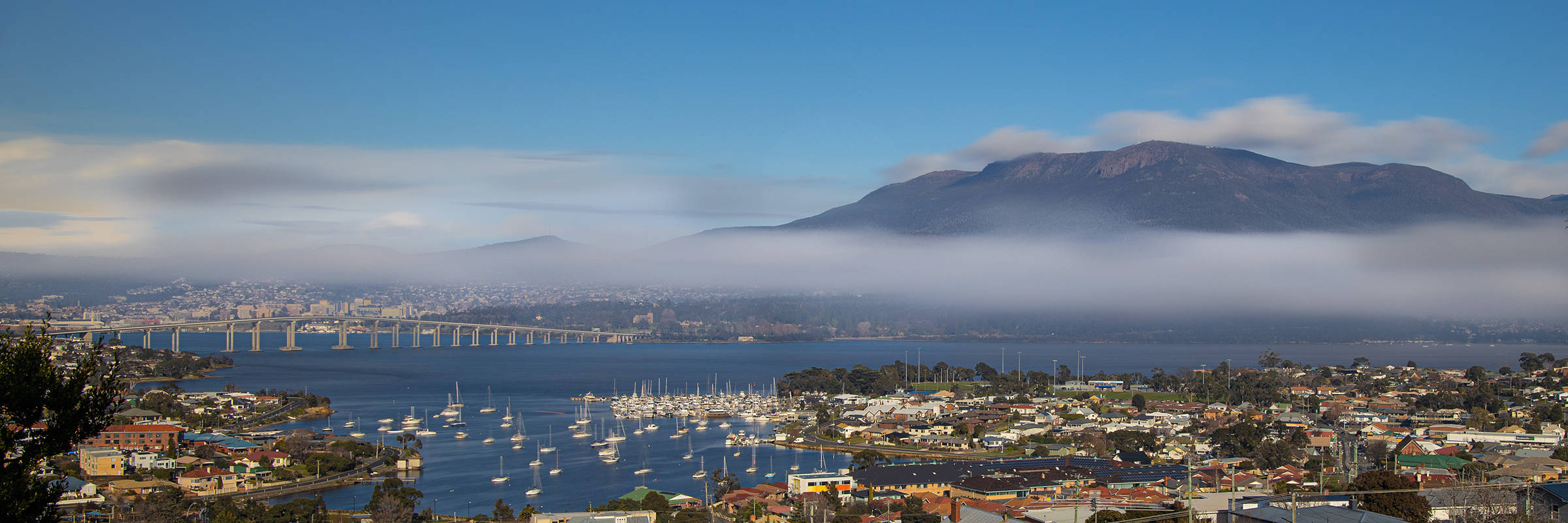
The Bridgewater Jerry phenomenon on the River Derwent, near Hobart Town, 1962.
Image: Clifford, from the Libraries Tasmania’s Online collection
The Bridgewater Jerry is the local name given a very particular type of fog, which affects the Derwent Estuary during autumn and winter.
At night, during these cooler months, cold air drains down the mountains of southern Tasmania as katabatic winds (type of drainage or downslope wind that flows downhill due to gravity) and collects in the Derwent Valley. If the air is moist and cool enough, fog will form. The following morning, the air drains out of the valley, blowing the fog with it.
The fog delights or frustrates, depending on your outlook, River Derwent residents along its way, including at New Norfolk, Bridgewater, the northern and western suburbs of Hobart, and occasionally the eastern shore.
There has been much speculation about the name ‘Jerry’. The most likely explanation is that it came with convicts from London, where it was local thieves’ slang for ‘fog’ or ‘mist’.
The Jerry phenomenon was apparently first recorded in 1821, when Governor Macquarie was staying at Austins Ferry and couldn’t travel to Hobart until 12.30 pm due to a thick fog.

The Bridgewater Jerry flowing down the Derwent estuary.
Image: Tim Rudman
Further information
- The adjacent information came largely from David James, Centre for Historical Studies.
- See more lovely ‘Jerry’ photos and information on the Bridgewater Jerry Facebook page.
- Learn more about katabatic winds from Weather Online NZ, and Alabama Weather Blog.
- Plan your next 'Jerry' photo; a science & arts project with the Bridgewater Jerry forecaster.
